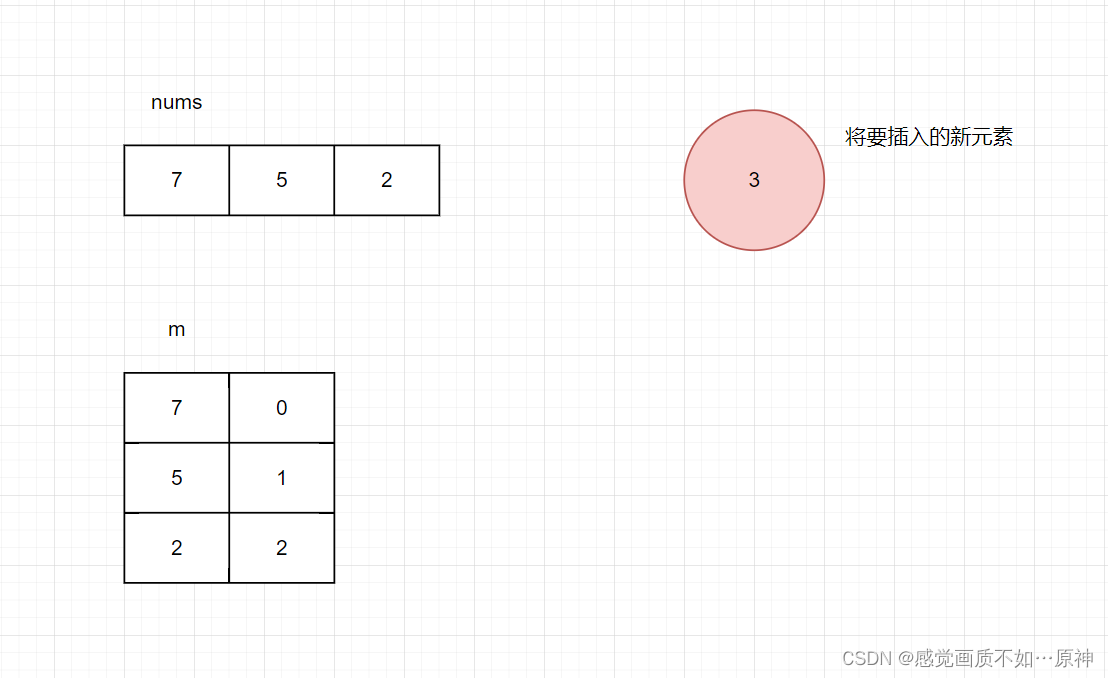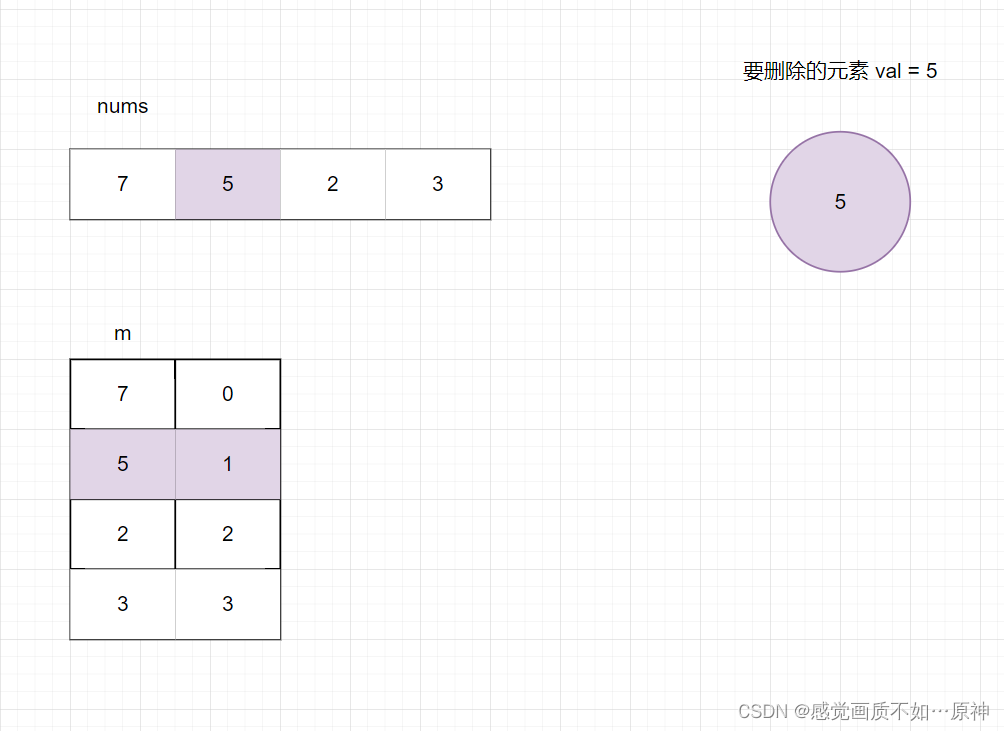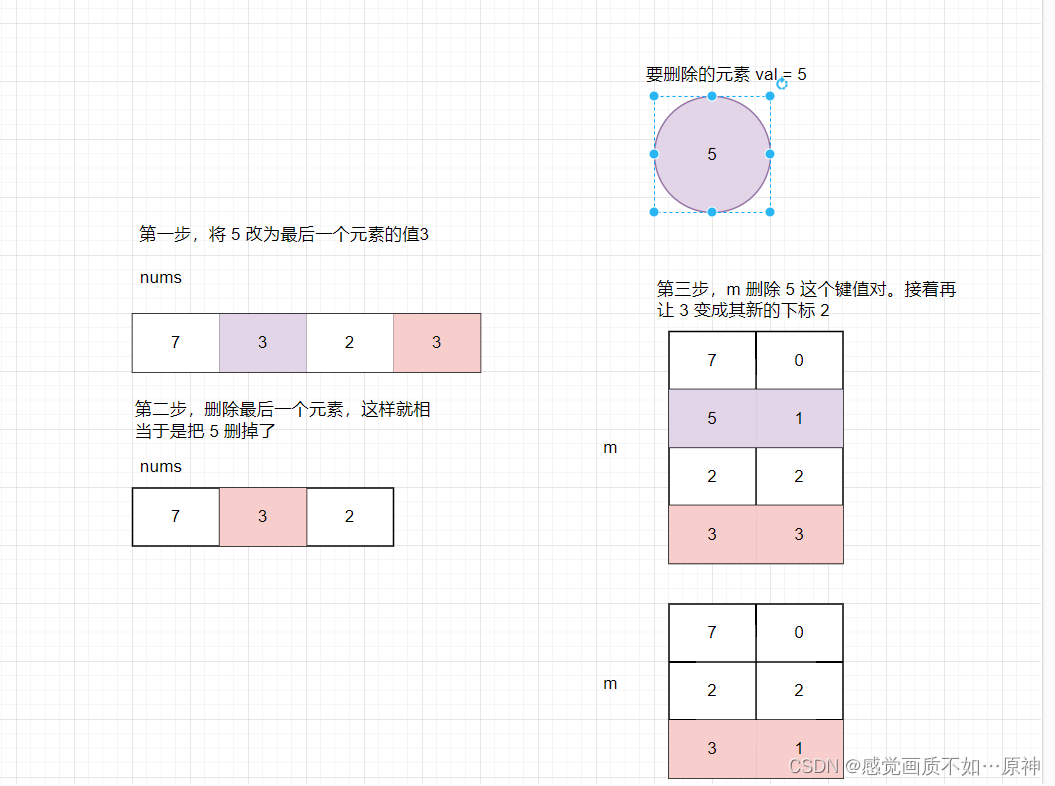剑指 Offer II 030. 插入、删除和随机访问都是 O(1) 的容器
题目链接
题目描述
设计一个支持在平均 时间复杂度 O ( 1 ) O(1) O(1) 下,执行以下操作的数据结构:
insert(val):当元素val不存在时返回true,并向集合中插入该项,否则返回false。remove(val):当元素val存在时返回true,并从集合中移除该项,否则返回false。getRandom:随机返回现有集合中的一项。每个元素应该有 相同的概率 被返回。
示例 :
输入: inputs = [“RandomizedSet”, “insert”, “remove”, “insert”, “getRandom”, “remove”, “insert”, “getRandom”]
[[], [1], [2], [2], [], [1], [2], []]
输出: [null, true, false, true, 2, true, false, 2]
解释:
RandomizedSet randomSet = new RandomizedSet(); // 初始化一个空的集合
randomSet.insert(1); // 向集合中插入 1 , 返回 true 表示 1 被成功地插入randomSet.remove(2); // 返回 false,表示集合中不存在 2
randomSet.insert(2); // 向集合中插入 2 返回 true ,集合现在包含 [1,2]
randomSet.getRandom(); // getRandom 应随机返回 1 或 2
randomSet.remove(1); // 从集合中移除 1 返回 true 。集合现在包含 [2]randomSet.insert(2); // 2 已在集合中,所以返回 false
randomSet.getRandom(); // 由于 2 是集合中唯一的数字,getRandom 总是返回 2
提示:
- − 2 31 < = v a l < = 2 31 − 1 -2^{31} <= val <= 2^{31} - 1 −231<=val<=231−1
- 最多进行
2
∗
1
0
5
2 * 10^5
2∗105 次
insert,remove和getRandom方法调用 - 当调用
getRandom方法时,集合中至少有一个元素
解法:哈希表 + 随机化
对于一个元素我们可以用一个哈希表 m来记录,这样我们就能实现
O
(
1
)
O(1)
O(1)的 insert和 remove。
对于题目要求的返回随机元素,且概率相同。我们可以用一个列表 nums存储插入的元素(每次插入都插入到末尾,删除也从末尾删除),这样也是
O
(
1
)
O(1)
O(1)。
m插入的 key是插入元素的值,value是该元素在 nums中的下标。
insert操作:


remove操作:


getRandom操作:直接返回随机下标 randomIdx = rand() % nums.size()的元素 nums[randomIdx]即可。
时间复杂度: O ( n ) O(n) O(n)
C++代码:
const int N = 2e5+10;
class RandomizedSet {
public:
int a[N];
int idx = -1;
unordered_map<int,int> m;
/** Initialize your data structure here. */
RandomizedSet() {
srand((unsigned)time(nullptr));
}
/** Inserts a value to the set. Returns true if the set did not already contain the specified element. */
bool insert(int val) {
//已经存在了 返回false
if(m.count(val)) return false;
a[++idx] = val;
m[val] = idx;
return true;
}
/** Removes a value from the set. Returns true if the set contained the specified element. */
bool remove(int val) {
//如果不存在 返回 false
if(!m.count(val)) return false;
int pos = m[val];
a[pos] = a[idx];
if(pos != idx) m[a[pos]] = pos;
idx--;
m.erase(val);
return true;
}
/** Get a random element from the set. */
int getRandom() {
int randomIdx = rand() % (idx + 1);
return a[randomIdx];
}
};
/**
* Your RandomizedSet object will be instantiated and called as such:
* RandomizedSet* obj = new RandomizedSet();
* bool param_1 = obj->insert(val);
* bool param_2 = obj->remove(val);
* int param_3 = obj->getRandom();
*/
Python代码:
class RandomizedSet:
def __init__(self):
"""
Initialize your data structure here.
"""
self.nums = []
self.m = {}
def insert(self, val: int) -> bool:
"""
Inserts a value to the set. Returns true if the set did not already contain the specified element.
"""
if val in self.m:
return False
n = len(self.nums)
self.m[val] = n
self.nums.append(val)
return True
def remove(self, val: int) -> bool:
"""
Removes a value from the set. Returns true if the set contained the specified element.
"""
if val not in self.m:
return False
pos = self.m[val]
self.nums[pos] = self.nums[-1]
self.m[self.nums[pos]] = pos
self.nums.pop()
del self.m[val]
return True
def getRandom(self) -> int:
"""
Get a random element from the set.
"""
return choice(self.nums)
# Your RandomizedSet object will be instantiated and called as such:
# obj = RandomizedSet()
# param_1 = obj.insert(val)
# param_2 = obj.remove(val)
# param_3 = obj.getRandom()
相关文章
- 运维成本降低 50%,丽迅物流是如何应对大规模容器镜像管理挑战的
- k8s kubesphere进入ks-installer容器删除istio并重启ks-installer命令
- docker容器间数据共享
- Docker容器里进程的 pid 是如何申请出来的?
- deque容器07之评委打分案例
- list容器的插入和删除
- DevOps与阿里云容器服务(三)
- Docker容器mysql创建表报错:Table ‘mybatis_plus.USER‘ doesn‘t exist 问题解决
- 【CSS】定位 ③ ( 绝对定位 | 父容器有定位相对于父容器定位 | 父容器没有定位相对于浏览器进行定位 )
- 【云原生之Docker实战】使用Docker部署Rancher容器管理平台
- C++基本序列式容器
- 如何知道一个镜像里有哪些容器 查看镜像里的容器
- 容器可以简化图形化界面的设计,以整体结构来布置界面
- docker批量删除容器、镜像
- Kubernetes 最小化微服务漏洞 安全沙箱运行容器:gVisor介绍与安装
- Docker删除容器命令
- 容器进程调度时,是该优先考虑 CPU 资源还是内存资源?

